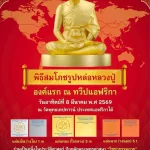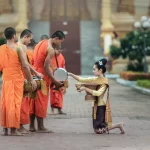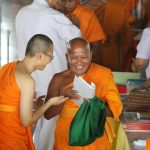
UPASIKA KAEW
Female Training Program
In Buddhism, a lady who take refuge in the triple gem and supports the Buddhist activities is called an Upasika. Since Lord Buddha’s time, Upasikas have played an important role in patronizing the temples and the monks and are considered a part of the four main groups of Buddhists: Bhikku, Bhikkuni, Upasok, Upasika. An example Upasika worth mentioning is Maha Rattana Upasika Visakha, who built Bubbharam, an important Buddhist temple.
Upasika Kaew is a morality training program for ladies to explore the eight precepts and follow the Middle Way, which is a path of enlightenment and purity. The ladies who take part in this program will learn about disciplines and learn to keep their body and their mind pure and bright. This training program will improve the morality level in both Thailand and Buddhism as a whole.
Therefore, the Religion, Art and Culture Commissioners of the House of Representatives, Wat Phra Dhammakaya, the Dhammakaya Foundation, the Village Leader Association of Thailand and the International Buddhist Society as well as the other patrons organized this 100,000 mass Upasika Kaew training program from March 8-15, 2553 B.E.(2010) at training temples every province across Thailand. The aim is not only to improve ethical conduct of Thai ladies to be good citizens of the society they belong, but also to help revive the morality of the world.
During the program, women practiced renunciation, performed wholesome deeds, and learned about the Buddhist Ideal and morality. The women who undertook the training can play an important role in protecting Buddhism and reviving world morality.
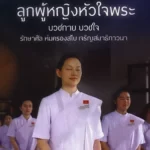
Objectives
- To educate morality and ethics through Buddhist teaching and thus make Buddhist ladies understand how to become true Upasika,
- To revive morality as well as Buddhist tradition to be as propereous as in the Lord Buddha’s time and
- To develop sustainable peaceful community and country by simply improving their ethical conducts.
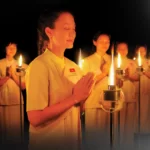
Advisory Committees
| President | Somdetphramaharatchamangkhlachan (Wat Paknam Bhasicharoen) |
Committees
| Phravisudhadhibbadi | Wat Suthat Thepwararam Rajavaramahavihara |
| Phraphomwethee | Wat Traimitr Withayaram Varavihara |
| Phraphomvajirayana | Wat Yan Nawa |
| Phraphommolee | Wat Phichaiyatikaram Varavihara |
| Phraphomsudee | Wat Srakesa Rajavaramahavihara |
| Phravisudhiwongsajarn | Wat Paknam Bhasicharoen |
| Phraphomchariyajarn | Wat Kapang Surin, Trang Province |
| Phradhamwarodom | Wat Tinnakorn Nimitra |
| Phradhamkitiwongse | Wat Ratcha Orasaram Rajavaravihara |
| Phradhamrajanuwatra | Wat Phra Kaew (Chiang Rai Province) |
| Phradhamcetiya | Wat Kalyanamitra Rajavaramahavihara |
| Phradhampanyaporn | Wat Paknam Bhasicharoen |
| Phradhamkunapon | Wat Samphraya varavihara |
| Phradhampariyativeti | Wat Phra Pathom Chedi Rajavaramahavihara |
| Phradhampidok | Wat Phrabuddhabat Rajavaramahavihara |
| Phradhamratanadilok | Wat Suthat Thepwararam Rajavaramahavihara |
| Phradhamkosajarn | Wat Prayurawongsawat Varavihara |
| Phradhamdirarajamuni | Wat Rakhang Kositaram Rajavaramahavihara |
| Phratheppariyatisudhee | Wat Bophitphimuk Varavihara |
| Phratheppariyatimedhi | Wat Chonprathan Rangsarit |
| Phrathepveeraporn | Wat Koksamanakun (Songkhla Province) |
| Phrathepsudhee | Wat Trai Dhammaram (Surat Thani Province) |
| Phrarajapariyattayaporn | Wat Khanket (the Lord Abbot of Pathum Thani Province) |
| And all the Lord Abbots of the Thailand Buddhist monastery | |
Organizing Committees
| Project Sponsor | Phrarajabhavanavisudh (The Abbot of the Dhammakaya Temple) |
| Project Manager |
|
| Co-supporters |
|

